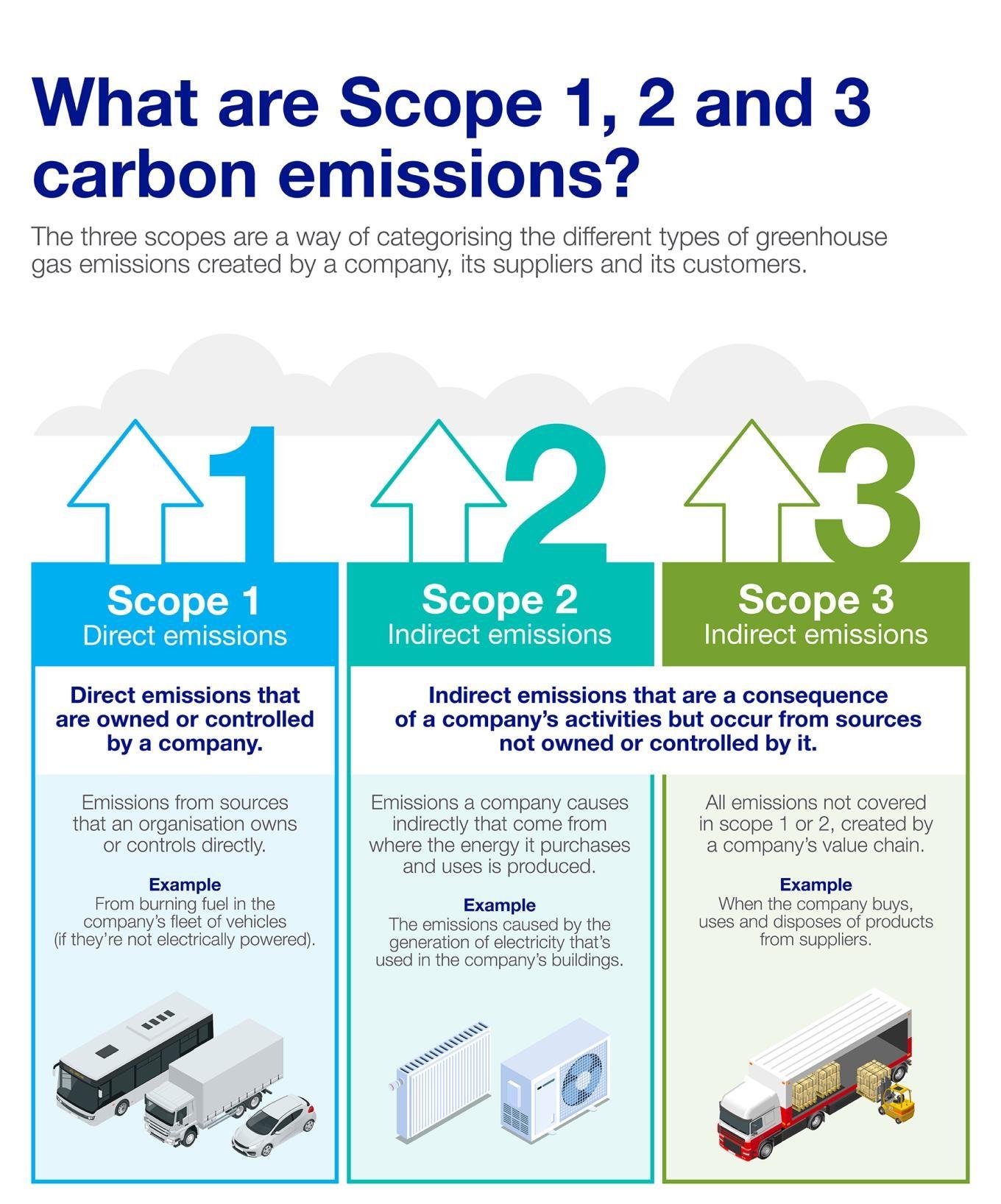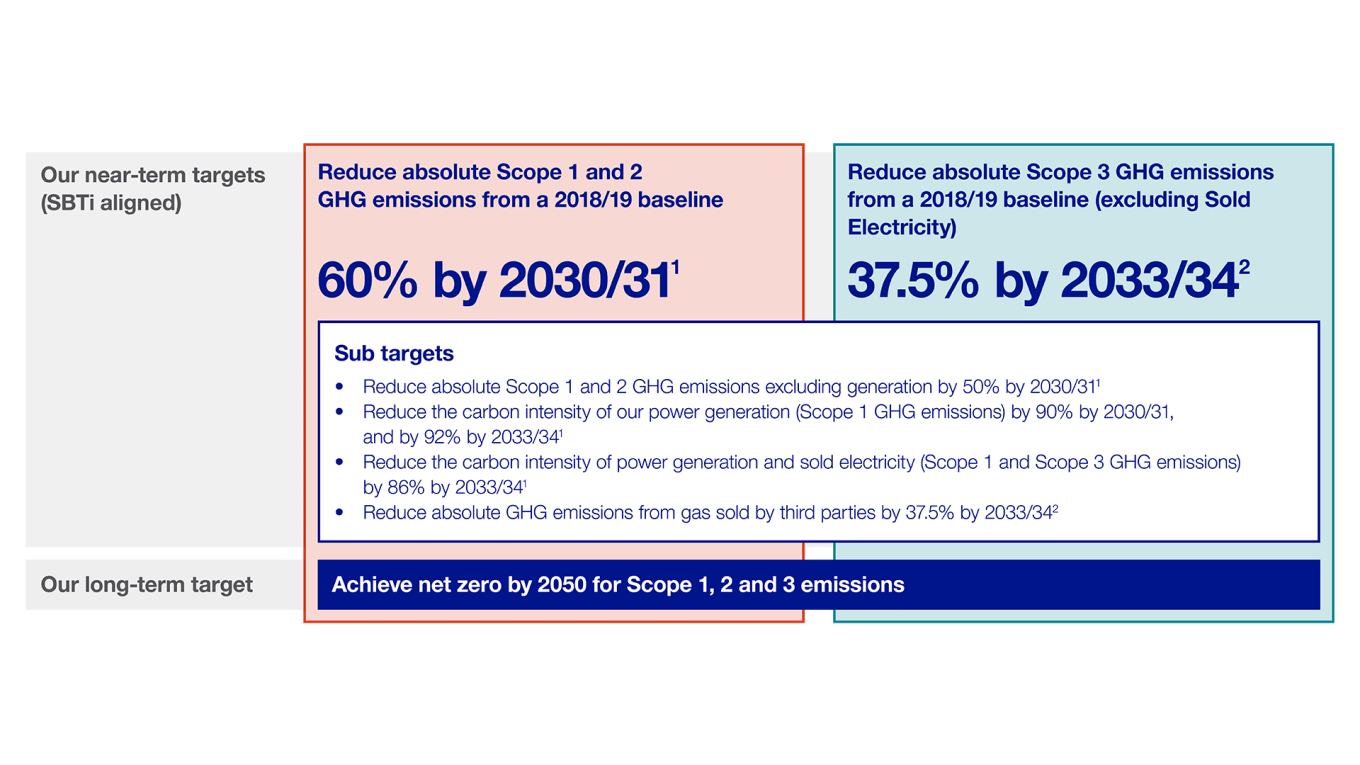Scope 1, 2 and 3 emissions
Our emissions are reported in different ‘Scopes’ as defined by the Greenhouse Gas (GHG) Protocol:
Scope 1 are those direct emissions that are owned or controlled by a company, whereas Scope 2 and 3 indirect emissions are a consequence of the activities of the company but occur from sources not owned or controlled by it.
Scope 1 emissions
Scope 1 covers emissions from sources that an organisation owns or controls directly – for example power generation from fossil fuels or from burning fuel in our fleet of vehicles (if they are not electrically-powered).
Scope 2 emissions
Scope 2 are emissions that a company causes indirectly and come from the energy it purchases from others. For example, the emissions caused when generating the electricity that we use in our buildings would fall into this category.
Scope 3 emissions
Scope 3 encompasses emissions that are not produced by the company itself and are not the result of activities from assets owned or controlled by them, but by those that it is indirectly responsible for up and down its value chain. An example of this is emissions from the electricity and gas that we sell to our customers or when we buy, use and dispose of products from suppliers. Scope 3 emissions include all sources not within the Scope 1 and 2 boundaries.

Our targets for Scope 1, 2 and 3 emissions
In our Climate Transition Plan (CTP), we set out our GHG emissions reduction targets, how we plan to achieve net zero by 2050, the actions we’re taking to get there, and where we need support from others.
Our long-term target is to reach net zero by 2050, limiting our use of offsetting to get there. We realise the need for action this decade and have worked with the Science Based Targets initiative (SBTi) to align our near-term targets to their 1.5°C pathway and the ambition of the Paris Agreement (see section on external accreditation from the SBTi below).
Our target is to:
- reduce absolute Scope 1 and Scope 2 GHG emissions from a 2018/19 baseline by 60% by 2030/31
- reduce absolute Scope 3 GHG emissions (excluding sold electricity) from the same baseline by 37.5% by 2033/34
As part of this SBTi validation, we also have a range of sub-targets.
External accreditation from the Science Based Targets initiative (SBTi)
We have worked with SBTi to ensure that our GHG emissions reduction targets are in line with the latest climate science. Our near-term group direct (Scope 1), indirect (Scope 2) and value chain (Scope 3) emissions targets follow the pathways necessary to limit global average temperature rise. Scope 1 & 2 are aligned to a 1.5°C pathway above pre-industrial levels. These targets were published by the SBTi in August 2023.
We believe our long-term net zero target aligns with the key principles of SBTi’s corporate net zero standard. However, we are unable to formally validate this owing to several factors, including SBTi having not yet developed a sector pathway for heat, and its power sector guidance not yet accounting for the growth in infrastructure needed to enable decarbonisation of the electricity system. We have engaged with the SBTi directly to discuss these points in detail and look forward to continuing to support the future development of this standard.
There are a number of dependencies to achieving our targets in the UK and US. Read more below on our dependencies page.

The Great Grid Upgrade
The Great Grid Upgrade is the largest overhaul of the UK electricity grid in generations. The initiative consists of 17 major infrastructure projects across England and Wales to connect more clean, affordable energy to the network. These projects will scale up the grid and update our existing networks, enabling us to carry more clean, secure energy from where it’s generated to where it‘s needed.
Find out more